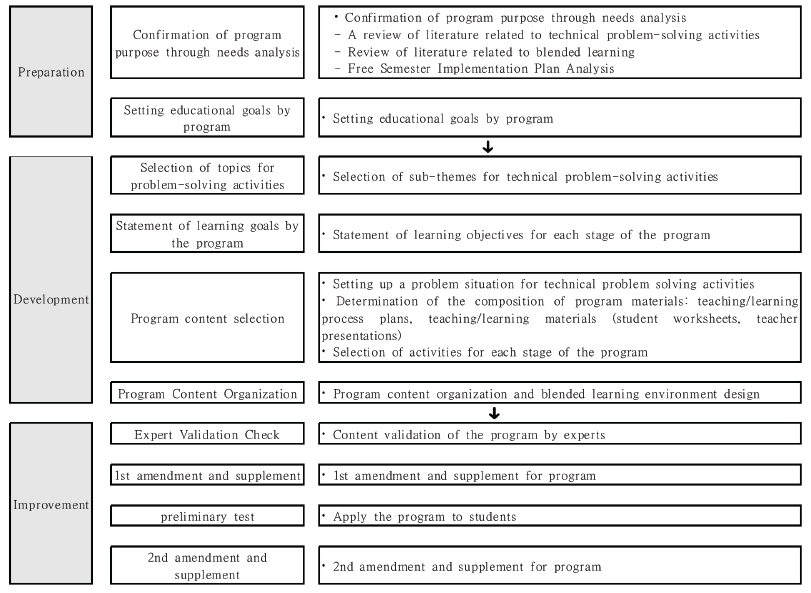Abstract
The purpose of this study is to develop a blended-learning based theme selection program, centered to technological problem-solving activity for middle school free-semester, so that students can develop their future core competencies, technological problem-solving skills, under a learning environment suitable for problem-solving activities. In order to achieve the purpose of the study, this program was developed as a three-step procedure: preparation, development, and improvement. In the preparation stage, for program development, technical problem solving activities, blended learning, and the topic selection program for the middle school free semester are identified through the analysis of literature and prior research related to technical problem solving activities, blended learning, and the middle school free semester. Educational goals were also set. In the development stage, detailed topics for problem-solving activities were set, the learning goals of the program were described, and the contents of the program were selected and organized based on this. Learning materials were also developed. In the development stage, detailed themes of problem-solving activities were set and the learning goals of the program were stated. And also, the contents of the program were selected and organized to develop teaching and learning materials including 16 sessions of teaching and a learning process proposal, a student activity paper, and a teacher presentation. In the improvement stage, the developed program was verified and revised for content validity by experts composed of 9 technical teachers, and the average of the questions was 4.60 out of a 5-point scale. In addition, a preliminary test was conducted with 8 first-year students of Seoul G Middle School to hear the opinions for improving the teaching materials. By reflecting the review opinions, the program was revised and supplemented.
Figures & Tables

Fig. 1. Research Process


